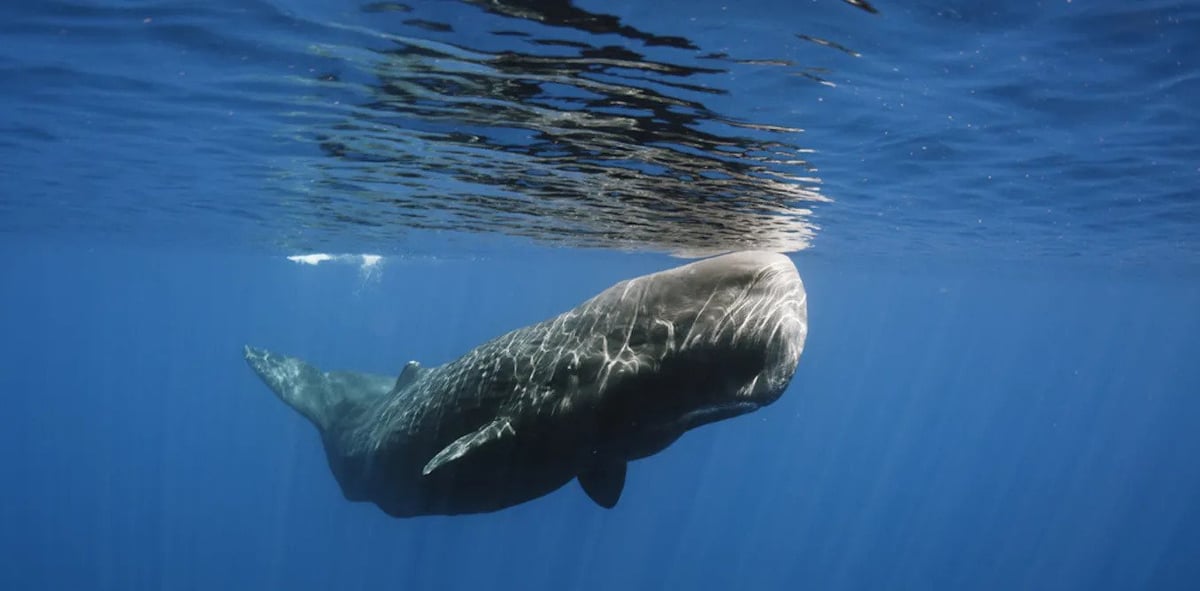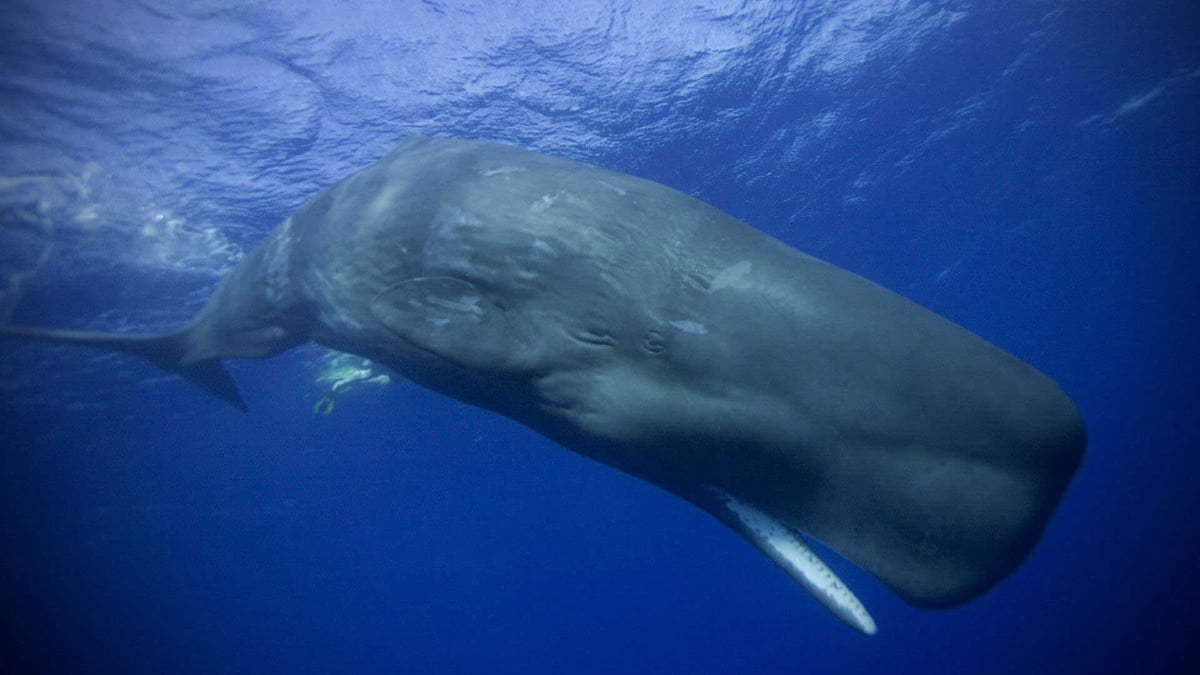If you’re walking along a beach one day and find some Ambergris just know that you’ve stumbled across a small fortune. Some crudely refer to it as sperm whale vomit while most don’t know it even exists.
This floating gold is actually the most important ingredient, bar none, in the perfume industry. It’s frequently used by luxury perfume houses like Roja Parfums, Amouage and House of Creed. And you’ll find that ambergris is even more expensive than genuine animal musk, Bulgarian rose and orris, which are some of the rarest and most expensive perfume ingredients available.
There have been cases of people stumbling upon natural ambergris and making some serious bank, such as a couple who, in 2006, found a 14.75kg lump of ambergris on a South Australian beach (Streaky Bay). According to a report by BBC, their finding was potentially worth US$295,000 (~AU$381,508) at the time. There have also been many findings in New Zealand, Japan and the Bahamas.
RELATED: 36 Best Perfumes & Colognes For Men In 2023
Ambergris forms in a sperm whale’s intestines and is one of the most valuable raw materials in the US$571 billion beauty industry. It basically washes ashore as hardened sea foam and has invigorating and aphrodisiac virtues which are harnessed by some of the aforementioned brands. As such, Ambergris perfumes are invariably more expensive to make than fragrances that don’t make use of fresh ambergris.
Importantly, no other marine mammals produce ambergris. Only sperm whales. In fact, only 1% of the world’s sperm whale population is capable of producing this hardened, waxy substance with a complex aroma.
What Is Ambergris? Table Of Contents
So, Is Ambergris Whale Vomit Or Not?

Ambergris is not whale vomit; that’s a common misconception. Ambergris is most probably whale excrement. In Ancient China, it was actually known as dragon’s spittle fragrance, so the means by which this substance is expelled from a sperm whale has been misunderstood for a very long time.
It’s not literal floating gold, liberated by jet streams after being sedimented on the ocean floor for years. Nor is it a piece of a comet that’s happened to break away from its mother load and crash into the sea.
As above, it’s quite literally whale excrement… commonly referred to as whale vomit, hardened over time to resemble misshapen grey-amber nuggets deposited so stealthily amongst grains of sand on beaches across the world.
Formed in the abdomen of the giant sperm whale is a triterpene alcohol named Ambrein. This naturally occurring ordure is often thought to be used by whales as a digestion aid to protect their internal organs from some of the sharper foods they consume, such as squid beaks and cuttlefish.

In most cases, these indigestible parts of prey would be vomited out before the digestion process begins, although in rare circumstances they bind together with the prey and another digestive product called epoprostenolin in the intestines, building up to a solid mass: ambergris.
Ambrein has been suggested as the active component that forms ambergris and is supposedly the substance responsible for its legendary aphrodisiac effects.
After the ambergris grows inside the sperm whale over many years, it’s expelled. Whether that’s via regurgitation – the prevailing theory (hence, ambergris conceived as whale vomit) – or with faecal matter is anyone’s guess. It could actually be an either-or situation.
The exact process by which the substance exits the whale has never been agreed upon by marine biologists. Some even think that ambergris can grow so large within a whale’s digestive system that it fatally erupts the rectum.
The History Of Ambergris

Unfortunately, it took a wave of large-scale whaling, during the 1800s, to even identify the source of ambergris as the sperm whale. Until then, its presence on beaches around the world was always seen as an intoxicating and unsolvable mystery.
After that, sperm whales were obviously targeted with the hopes that the ambergris could be extracted.
The by-product of what is essentially whale dyspepsia became so highly sought after that even Herman Melville wrote, in his classic 1851 novel Moby Dick, that “a faint stream of perfume” came from the corpse of a whale.
American and European perfumers started using ambergris as a fixative to help scents last longer. The substance was used in everything from cigarettes and incense to flavoured food and hair-powders. In Turkey, it would be used as a flavour enhancer in Istanbul coffee houses. Some wine merchants would flavour red wine with it.
The soft, wavy, highly fragrant and slightly spicy substance was in such ferocious demand and held in such high esteem that some thought it could even be used to prevent infection with the plague.
Given perfume was often seen as an unquestionable way to mark one’s status in the 19th century – obviously, an idea that rightfully pervades to this day – the value of ambergris could not be overstated in aristocratic society.
Perhaps the best-known fragrance using ambergris as a prominent ingredient in the 19th century was Creed’s legendary Fleurs de Bulgarie, famously created in 1845 for Queen Victoria. The formula for this perfume hasn’t changed; it still layers ambergris in with supporting notes of Bulgarian rose, bergamot, and musk.
Needless to say, sh*t was serious business.
How Do I Tell If Ambergris Is Real Or Fake?

However it finds its way out of the sperm whale, ambergris usually spends years floating in the sea, during which a white coating forms around it as a result of the oxidisation in salt water. Before this, the lump of ambergris is typically black upon exit.
While the water essentially bleaches the waste product, the scent of the substance is reduced and gradually lost. This is replaced by the scents of the sea, absorbed into the waxy nugget via osmosis.
The more time it spends bobbing in the sea, the waxier it becomes and more soluble. This means that when the nugget does eventually wash up on the shore, lighter colours would indicate a sweeter fragrance.
If you do stumble upon what you think is ambergris, don’t get too excited. Not immediately, anyway.
First, consider that finding ambergris just lying around on the beach is extremely unlikely. But if you do happen upon a waxy blob with a strong smell, there are a few ways to tell if it’s the real deal or just oil residue.
The Hot Needle Test
You can conduct a simple hot needle test. If it is ambergris, touching the nugget with a hot needle will melt it and release a strong-smelling white smoke.
Be aware that many other waxy objects melt when they are exposed to heat. That’s… what heat does. Although not all of them can spit the kind of white smoke Ambergris does in the video above. If you’ve got a billowing white cloud puffing towards you at full speed, you have permission to officially act like you’ve won the lottery.
If you’ve got a dog with you, and they’re acting like they’ve just found the best-smelling truffle in the world, you’re also likely in the green.
How Is Ambergris Used In Perfume?

Due to the incredible scarcity of ambergris, synthetic chemical alternatives to the substance are increasingly used. Although it’s unlikely the more high-end perfumers would use anything less than the real deal; many of the best fragrances today still make use of the ingredient.
Take Creed’s gorgeous Green Irish Tweed eau de parfum for example. You’ll find ambergris in the dry-down, right along with other prominent notes like Bulgarian rose, vetiver, and patchouli.
Burberry’s popular Mr Burberry Element eau de toilette uses ambergris along with top notes of green almond and juniper heart.
The incredible Ashore eau de parfum from the Amouage ‘Renaissance Collection’ lists ambergris accord in the base notes for the floral fragrance, along with olibanum hyper absolute and sandalwood oil.
There are others but these are some of my favourites out of the ones I had experience with.
Whale Products & The Law

If you find some fresh ambergris overseas and you’re thinking about bringing it back to Australia. Think twice. Under Australian law, ambergris is considered to be a whale product, so its regulation falls under the Environment Protection and Biodiversity Conservation Act 1999.
Part 13A of this act outlines the export and import of all whale products in alignment with Australia’s obligations under the Convention on International Trade in Endangered Species of Wild Fauna and Flora (CITES).
Considering this, non-live sperm whale specimens may only be moved internationally if the specimen (in this case, ambergris) was taken from the animal before 28 June 1979 (the date on which sperm whales were included in the CITES index).
Ambergris may also be moved for scientific purposes, for educational purposes and for exhibition purposes. Unfortunately, for-profit purposes don’t count.
To read the full outline of Ambergris and Australian law head to environment.gov.au
Frequently Asked Questions
Where is ambergris commonly found?
Most commercially collected ambergris comes from the Bahamas in the Atlantic, particularly New Providence.
Where can I find ambergris?
Aside from the Bahama,s Ambergris can also be found across the Atlantic Ocean and on the coasts of South Africa, Brazil, Madagascar, the East Indies, The Maldives, China, Japan, India, Australia, New Zealand, and the Molucca Islands.
Is it legal to sell ambergris in Australia?
Seeing as ambergris is considered a whale product in Australia, it would be illegal to sell it. However, in many other countries, like the UK, it is perfectly legal to sell a lump of ambergris you found on the beach.
















